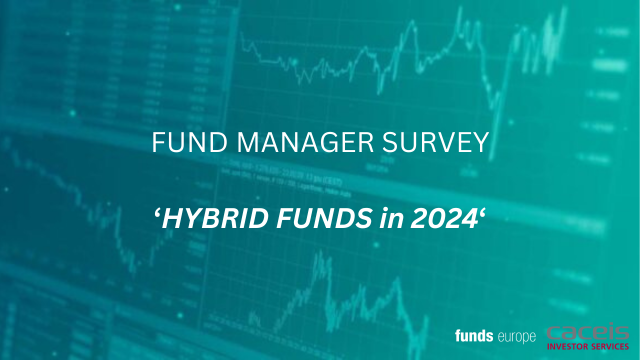Amid global decarbonisation drives, a boom in infrastructure investment presents unparalleled opportunities – but also significant challenges, writes Piyasi Mitra.
The global infrastructure sector is booming, largely driven by the US Inflation Reduction Act (IRA). This legislation, sanctioned by President Joe Biden in 2022, has allocated around $370 billion (€342 billion) towards eco-friendly ventures in clean energy, transportation and other sustainable projects, aiming to bolster public and private entities through grants, loans and tax credits.
But as investments pour in, are investors adequately prepared to navigate the intricate maze of opportunities and pitfalls this surge presents?
Key to decarbonisation
Charles Hamieh, portfolio manager at ClearBridge Investments, emphasises the instrumental role of policy in fostering the sector’s expansion, particularly in speeding up the growth of renewable energy and economical decarbonisation technologies.
“This involves targeted tax breaks, subsidies and technology funding designed to accelerate the process – especially extending the duration of subsidies and tax breaks until the 2040s in the case of the IRA package.”
Such legislation, he says, offers investors and developers the stability they desire when committing capital. “This is achieved by working hand in hand with manufacturers and industrial companies as they onshore manufacturing as part of the IRA package and other legislation.”
The uptrend in infrastructure and utility investments is undeniable, with decarbonisation the main focus. “A lot of that investment is to do with localised energy needs, logistics, supply chains and infrastructure, which are being done by listed infrastructure companies. Be it the evolution of communications with 5G networks or other iterations of technology, this is global,” says Hamieh.
To inch closer to a net-zero future, an estimated $2 trillion to $3 trillion is required annually over the next 20-30 years. Hamieh adds that consolidated, focused spending by governments on infrastructure makes affordability easier to manage.
“The more they can consolidate their spend, the more they can rely on selected large-scale utilities to deliver the capex, the easier it becomes to control the affordability of the investment.”
Infrastructure, in his view, is evolving into a sector marked by rapid growth while also offering essential services. He emphasises the parallel growth trends observed in both emerging and developed markets. The evolving landscape of North American utilities especially intrigues him. “Most of these utilities have state-based regulation, working with state governments and regulators to replace fossil fuels with renewables.”
“The more they can consolidate their spend, the more they can rely on selected large-scale utilities to deliver the capex, the easier it becomes to control the affordability of the investment.”
This shift, Hamieh believes, presents abundant opportunities for utilities to expand their assets and yield lucrative returns, a trend prevalent across numerous North American utility companies.
Even though it is at a nascent stage, the IRA has been instrumental in promoting the onshoring of manufacturing, he says. “Many large manufacturing facilities have been onshored in North America, involving billions of dollars’ worth of capex and trading numerous jobs. Many of those now are being run by renewable energy using the IRA package.”
The Inflation Reduction Act aims to reduce carbon emissions by roughly 40% by 2030, which means the opportunities are “immediate”, he adds.
The UK has also moved aggressively on the policy and technology side. Still, the government is more “fiscally constrained” than Europe and North America, points out Hamieh, adding that he is hopeful about the scenario changing over time. “They’re focusing more on offshore wind, which is expensive and time-consuming.”
In the EU, the Digital Decade framework means that by 2030, all households will be covered by a gigabit network, and all populated areas will be covered by networks of at least 5G performance.
Also, European utility companies are paving the way for a sustainable future, in line with the EU’s ambition of achieving climate neutrality by 2050. Not only are businesses in the utility sector undergoing a transformation, but traditional infrastructure assets, including airports, toll roads and both passenger and freight trains, are also evolving.
Technology is enhancing the efficiency of distribution and transmission lines – an important step, given the unpredictable nature of renewable energy sources. Meanwhile, listed utilities are witnessing technological advancements in hydrogen. Of particular interest is green hydrogen, obtained sustainably by the electrolysis of water.
Considerable risks
Risks include infrastructure assets that are non-green becoming ‘stranded’ or suffering devaluations. These risks could occur from market shrinkage, regulatory change, failures in supply chains or disruption from green competitors, according to Rob Arnold, sustainability research director at the EDHEC-Risk Climate Impact Institute.
For example, airports might see falling demand if sustainable air travel is too costly, and an obvious case of green competition is where renewable energy outpaces fossil-fuel electricity generation.
“Most of these utilities have state-based regulation, working with state governments and regulators to replace fossil fuels with renewables.”
As for the regulatory risk, Arnold says: “Infrastructure classified as unsustainable by green taxonomies, or simply overlooked by them, may also become devalued due to the perceived reputational risk of ownership and ineligibility of access to green finance initiatives. Market and regulatory changes in the next 15 years could exacerbate this risk.”
An average infrastructure portfolio has between ten and 20 assets – so having two airports, each with a 50% chance of severe damage from extreme weather, presents a considerable risk, he notes.
As physical risk from climate change offers no benefits, portfolio diversification offers limited risk mitigation since there are no positives to offset the negatives, argues Arnold. Investors might dilute losses in larger portfolios, but this is hard to achieve.
Infra debt: the interest effect
On the positive side, a recent report by Australia’s IFM Investors highlighted the resilience of infrastructure debt, which offers inflation protection partly due to long-term contracts inherent in many infrastructure assets, which should see yields maintained.
Elsewhere, higher rates are attracting new institutional lenders for whom returns were previously too low, says Ashley Blows, senior adviser at Validus Risk Management.
At the same time, higher interest rates are causing difficulties in the greenfield infrastructure sector. Here, the market is seeing transactions postponed or even abandoned, says Blows, adding that there has been an increase in infrastructure fund managers looking for independent specialists to help mitigate interest rate risk.
Higher rates lead to debt structures with increased structural features to mitigate refinancing risk. For example, a debt structure might have a more frequent repayment schedule.
“Infrastructure classified as unsustainable by green taxonomies, or simply overlooked by them, may also become devalued due to the perceived reputational risk of ownership and ineligibility of access to green finance initiatives.”
“All things being equal, this implies an increased proportion of cashflows being dedicated to servicing debt rather than generating a return to equity. The resulting rise in capital costs is leading to lower purchase multiples and, in some areas of the market, reduced buyer competition is leading to longer exit times,” says Blows.
Even if the fundamentals driving investment in infrastructure – such as the asset class’s role as an inflation hedge – remain unchanged, higher interest rates still lead to more uncertainty in today’s market and some limited partners (LPs) are taking a more risk-off approach.
Blows believes fundraising will take longer and that a flight to quality assets managed by the more prominent managers in the infrastructure field will be seen.
Simply put, a re-up is an LP in a manager’s current fund investing in their next one, Blows adds. “A high re-up rate is a sign that investors are comfortable with infrastructure as an asset class – the manager is doing a good job and their LPs are staying loyal. Investors are remaining conservative and sticking with the devils they know. It is proving harder to bring new investors into the asset class.”
Social value
Emerging segments like social infrastructure, marked by low levels of institutional penetration, can offer an excellent source of value, says Neil Sarkhel, chief operations officer at Newcore Capital. He believes social infrastructure – physical assets that enable the provision of essential services such as education and healthcare – is on the brink of becoming an institutional asset class.
Newcore, based in the UK, has acquired seven assets across Greater London and neighbouring commuter towns as part of its social infrastructure fund. The firm recently raised its fifth value-add social infrastructure fund, securing about £190 million (€221 million) from a mix of institutions, family offices and high-net-worth individuals.
“Investing in social infrastructure real estate allows investors such as pension funds and insurers to access assets that are often a) resilient, as non-discretionary spending combined with physical need underpins demand; and b) ESG-friendly, as they can generate tangible social value,” says Sarkhel. “There is a diverse set of uses – from special needs education to even mortuaries, a subsector we recently entered.”
Promising horizons
Listed infrastructure funds are growing as a vehicle in the UK, says Duncan Ball, co-CEO of the BBGI Global Infrastructure Fund, thanks to economic and social infrastructure, infrastructure debt and renewable energy projects. The combined market capitalisation of these investment companies exceeds £21 billion, Ball notes.
“The UK has diverse projects allowing fund managers to create portfolios with a mix of assets, providing potential for risk mitigation and attractive returns,” he says.
According to Simon Gordon, senior director of fund and corporate services at JTC Group, a fund administrator, appetite for infrastructure was expected to grow in a post-Covid world. “Subsectors such as digital infrastructure were expected to support a huge increase in hybrid and remote working, and renewable energy infrastructure, to support the move towards a 2050 net-zero target, would see increased investment growth,” says Gordon. “In the second half of 2023 and into 2024, sustained energy transition will mean that more battery storage is required as well as other clean energy sources.”
“A high re-up rate is a sign that investors are comfortable with infrastructure as an asset class – the manager is doing a good job and their LPs are staying loyal. Investors are remaining conservative and sticking with the devils they know. It is proving harder to bring new investors into the asset class.”
Another growth area he envisages is EV charging stations, which need to grow significantly over the next few years as many countries target the phasing out of the sale of internal combustion engine cars.
As inflation and interest rates increase, infrastructure funds must compete with government bonds and other near-cash instruments for investor money, says Gordon. Fortunately, many infrastructure investments are hedged against inflation because they remain attractive as an essential requirement.
He argues it is crucial to upgrade old infrastructure in the developed world and to increase spending on traditional and digital infrastructure in the developing world, so the appetite for infrastructure investment should remain “relatively strong”.
© 2023 funds europe





